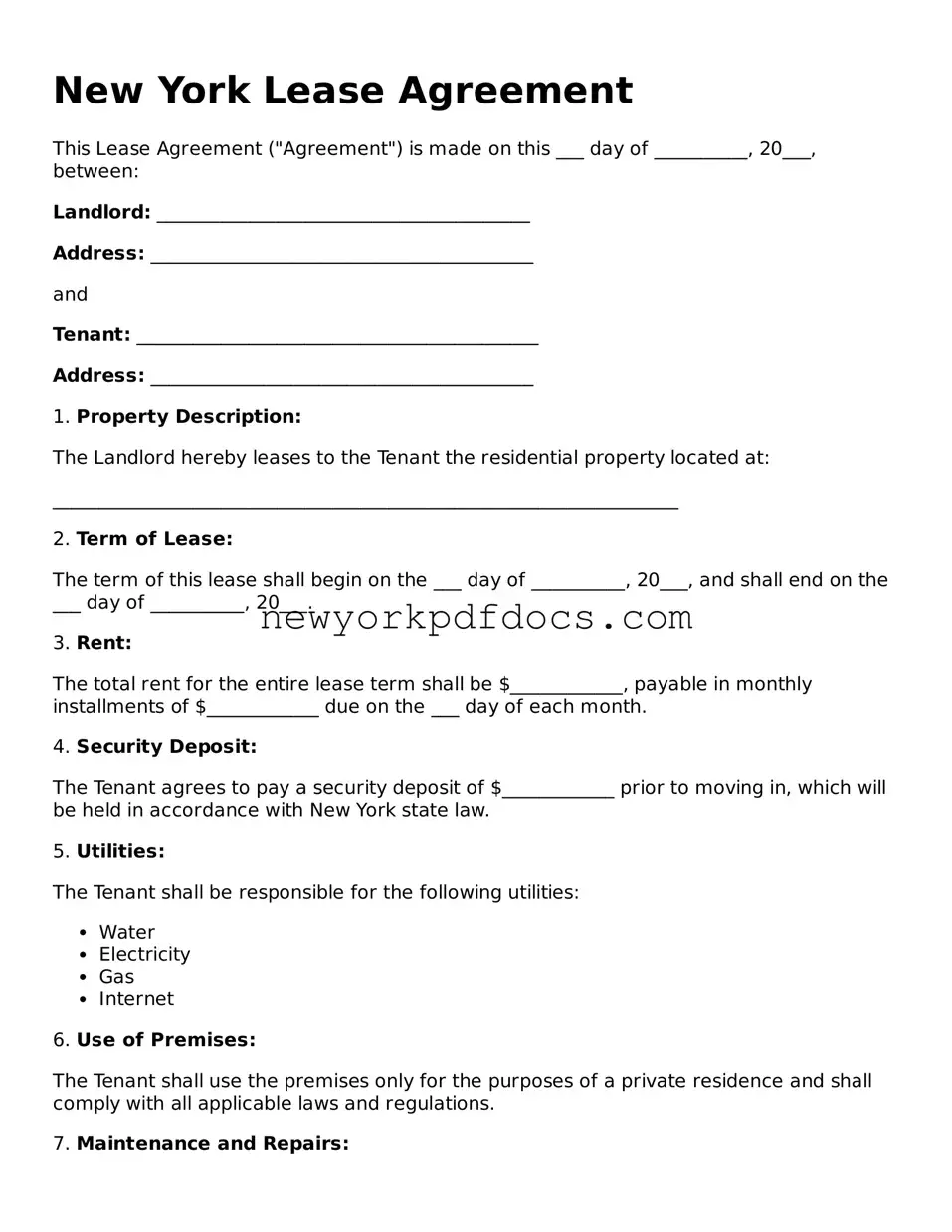New York Lease Agreement
This Lease Agreement ("Agreement") is made on this ___ day of __________, 20___, between:
Landlord: ________________________________________
Address: _________________________________________
and
Tenant: ___________________________________________
Address: _________________________________________
1. Property Description:
The Landlord hereby leases to the Tenant the residential property located at:
___________________________________________________________________
2. Term of Lease:
The term of this lease shall begin on the ___ day of __________, 20___, and shall end on the ___ day of __________, 20___.
3. Rent:
The total rent for the entire lease term shall be $____________, payable in monthly installments of $____________ due on the ___ day of each month.
4. Security Deposit:
The Tenant agrees to pay a security deposit of $____________ prior to moving in, which will be held in accordance with New York state law.
5. Utilities:
The Tenant shall be responsible for the following utilities:
- Water
- Electricity
- Gas
- Internet
6. Use of Premises:
The Tenant shall use the premises only for the purposes of a private residence and shall comply with all applicable laws and regulations.
7. Maintenance and Repairs:
The Landlord shall be responsible for maintaining the common areas and major repairs. The Tenant will be responsible for minor repairs and maintenance.
8. Termination:
The Tenant or Landlord may terminate this lease by providing ____ days written notice to the other party.
9. Governing Law:
This Agreement shall be governed by and construed in accordance with the laws of the State of New York.
10. Signatures:
This Agreement is executed as of the date first above written.
Landlord Signature: ___________________________
Date: ____________
Tenant Signature: _____________________________
Date: ____________
